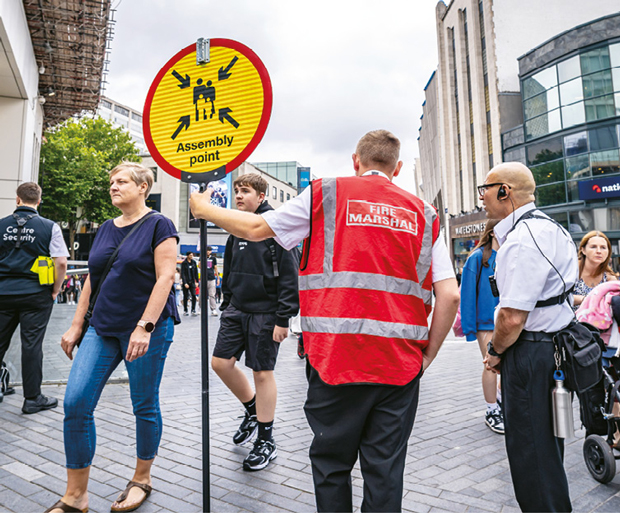Gary Ellis, Director at CE Safety explains the importance of fire safety training for staff, particularly designated fire marshals
Under the Regulatory Reform (Fire Safety) Order 2005, it’s a legal requirement for all staff to have undertaken fire safety awareness training. But beyond this, it’s also extremely important for all organisations and workplaces to have designated fire marshals or fire wardens who have received additional training.
When everyone in the organisation has received some level of training, it makes an evacuation in the event of a fire a much smoother, faster and safer process. One of the most dangerous aspects of a fire is how quickly it can spread, which is often underestimated by people who have not been trained in fire safety. Studies have also shown that when asked if they would evacuate through a smoky area, as many as 65 per cent of people said they would, even though smoke inhalation is extremely dangerous and can cause major injuries. People who have been trained in fire safety understand how serious the risks are, helping them stay safe as they evacuate.
FIRE SAFETY AWARENESS TRAINING
Fire safety awareness training will teach everyone in your organisation the basics of this important topic. Your team will learn about common causes of fires and precautions that need to be taken. It should cover the use of fire extinguishers and other firefighting equipment, how to conduct a safe evacuation, including what to do when the fire alarm sounds, and the location of your workplace’s assembly points. This should include how to use fire doors to maximise the safety of all employees and visitors.
Fire doors are one of any workplace’s most important fire safety tools. At CE Safety, we recently conducted some research into UK workers’ experience of fire doors at their workplace, as well as their knowledge of how these safety measures work. We were concerned to find out that over a third (34 per cent) of our survey respondents did not know how a fire door should be kept when not in use. Although an internal fire escape door needs to be either kept closed or fitted with a door release unit that will hold the door open and automatically close it at the sound of a fire alarm, 41 per cent of people said they had seen a fire door propped or wedged open at their workplace.
The survey asked about the training people had received at their workplace and it was worrying to hear that 35 per cent said they had not been shown the fire exit route out of their building, including the location of the final fire exit door. A final fire exit door differs from an internal fire exit door in that it is designed to be the point at which you exit the building, and it should never be locked while people are inside.
FIRE MARSHAL TRAINING
Fire marshals have an increased level of responsibility in any workplace when it comes to fires, leading both evacuations and drills. Also known as fire wardens, there should be at least one person in this role for each floor of your workplace. There may need to be more if it’s classed as a medium or high-risk workplace, which include the presence of flammable materials or a complicated building layout. Remember as well that you need to factor in sickness, holiday and different shift patterns, to make sure that there will always be enough fire marshals on site.
It is a legal requirement that all fire wardens undertake sufficient training. People who attend fire marshal training will come away with a deeper understanding of fire regulations, as well as receiving practical training on their role in an emergency helping everyone evacuate the building. Not every training provider includes hands-on practice with fire extinguishers, but this is something we offer at CE Safety. Under the Regulatory Reform (Fire Safety) Order 2005, only “competent staff” who have received adequate training in the use of fire extinguishers are permitted to use them.
Fire marshals’ work extends beyond the evacuation itself, and involves checking that fire doors, fire extinguishers, break glass call points, emergency lighting and everything else that keeps your workplace safe in the event of a fire are all in good working condition.
In our survey on fire doors, we also asked workers to identify issues that would affect how well a fire door works. Fifty-seven per cent of respondents correctly identified cracked glass as an issue, and 43 per cent said the lock being removed would be a problem, as this would allow toxic smoke to travel through the door.
While our recent research focused on fire doors, there are of course so many other important aspects of fire safety. Every workplace needs its own risk assessment and evacuation plan, that considers the people who use the building and any additional training and support they may need to deal with an emergency.





